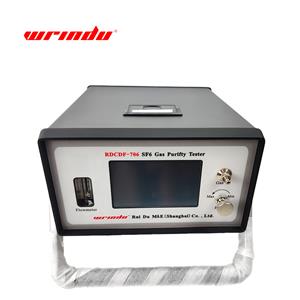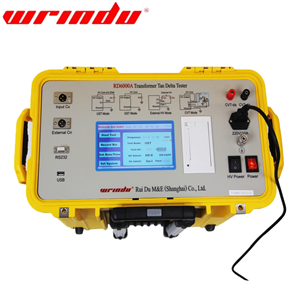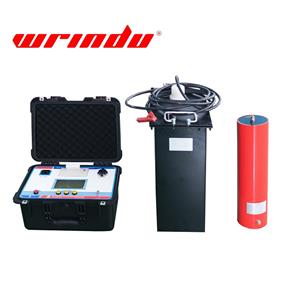Eight questions about insulation resistance measurement
Insulation resistance measurement, which is the easiest auxiliary method for checking the insulation status, can detect problems between the components of electrical equipment and measure the operating conditions and hidden dangers of the equipment.
For example, foreign matter affecting the conductive part of the insulation, checking the insulation locally or as a whole damp and dirty, as well as serious defects such as serious deterioration of insulating oil, insulation breakdown and serious thermal aging. I have compiled the most frequently asked questions about resistance insulation measurement and provided answers for your reference only.
What is the purpose of performing an insulation resistance test?
Understand the insulation performance of the insulation structure; a reasonable insulation structure or insulation system composed of high-quality insulating materials should have good insulation performance and high insulation resistance value.
Understand the insulation performance of electrical products; electrical products with poor insulation treatment, its insulation performance will be significantly reduced.
Understand the insulation moisture and pollution situation; when the insulation of electrical equipment moisture and pollution, its insulation resistance will usually drop significantly.
To check whether the insulation can withstand voltage withstand test; If the voltage withstand test is conducted when the insulation resistance of the electrical equipment is lower than a certain limit value, it will generate a large test current, resulting in thermal breakdown and damage to the insulation of the electrical equipment. For this reason, various test standards usually require that the insulation resistance be measured before the withstand voltage test.
Why the measurement of insulation, not only requires the measurement of simple resistance, but also requires the measurement of the absorption ratio, polarization index, what is the significance?
In the insulation test, a moment of insulation resistance value is not a comprehensive reflection of the insulating properties of the test specimen, this is due to the following two reasons, on the one hand, the same performance of the insulating material, the volume of large insulation resistance is small, the volume of small insulation resistance presented by the insulation resistance. On the other hand, the insulating material in the addition of high-voltage after the existence of the charge absorption ratio process and polarization process. Therefore, the power system requirements in the main transformer, cable, motor and many other occasions in the insulation test should be measured in the absorption ratio - that is, R60s and R15s ratio, and polarization index - that is, R10min and R1min ratio, and this data to determine the advantages and disadvantages of the insulation condition.
In the high-voltage and high-resistance test environment, why do you require the instrument to be connected to the "G" end of the line?
In the test product coupled with a higher rated voltage at both ends, and the insulation resistance value is high, the test product surface by moisture, pollution caused by the leakage of a larger, larger error in the display value, and the instrument "G" end is the surface of the test product leakage current bypass, so that the leakage current does not pass through the instrument's test circuit, eliminating the leakage current error caused by the leakage current.
Can you use a shaking table to directly measure the electrically charged test article, what is the effect of the results, and why?
In order to personal safety and normal testing, in principle, is not allowed to measure the electrically charged test article, if you want to measure the electrically charged test article, will not cause damage to the instrument (within a short period of time), but the test results are inaccurate, because after the electrically charged, the test article will be connected with other test articles, so the results can not be a true reflection of the actual data, but with the other test articles together with the parallel or series resistance value.
When measuring insulation resistance with a shaking table, what factors will cause inaccurate measurement data and why?
Insufficient battery voltage in the electric shaker meter. The battery voltage is under-voltage and too low, causing the circuit to not work properly, so the measured reading is inaccurate.
The test line is not connected correctly. Mistake "L", "G", "E" three-terminal wiring is wrong, or "G", "L" line "G", "E" line is connected to both ends of the product under test.
The "G" end wire is not connected. Tested products due to pollution and humidity and other factors caused by current leakage caused by the error, resulting in inaccurate testing, this time must be connected to the "G" end of the line to prevent leakage of current caused by error.
Interference is too large. If the product under test is subject to environmental electromagnetic interference is too large, causing the meter reading jump. Or pointer shaking. Resulting in inaccurate readings.
Human error in reading. When measuring with a pointer-type rocking meter, the inaccuracy of the display value is caused by human perspective error or scale error.
Instrument error. The meter itself has too much error and needs to be recalibrated.
How to measure the insulation resistance of the secondary circuit?
For the secondary circuit on the screen (cabinet), disconnect all externally introduced circuits and cables at the terminal row of the screen (cabinet), connect all current, voltage and DC control signal circuits together, remove or short out the parts that can not withstand high voltage (capacitors, semiconductor devices, etc.), and measure the insulation resistance of the circuits to the ground and the circuits to each other with a 1000V rocking meter.
For the whole secondary circuit, connect all the current, voltage and DC control signal circuit terminals together at the terminal row of the screen (cabinet), disconnect the current circuit from the ground, and measure the insulation resistance of the circuits to ground with a 1000V rocking meter.
Insulation resistance value and what factors?
Normally the insulation resistance value decreases with increasing temperature. In order to compare the measured value with the past, the measured insulation resistance value should be converted to the same temperature before comparison;
The insulation resistance value decreases with the increase of humidity in the air. In order to eliminate the influence of leakage current on the surface of the measured object, it is necessary to wipe away the moisture and dirt on the surface of the measured object with dry cotton gauze.
Insulation resistance value and the size of the capacitance of the measured object is related to the capacitance of large (such as cables, large transformers, etc.), in the measurement should be before the rocking meter shield end G access, otherwise the measured value is small;; insulation resistance and the voltage level of the rocking meter is related to the insulation resistance of the measured object is related to the voltage level of the rocking meter.
Insulation resistance and shaking table voltage level, should be connected to the rated voltage level of the measured object, should be measured according to the rated voltage level of the object, the correct choice of shaking table, such as the measurement of 35KV equipment, should be selected 2500v shaking table, if the shaking table voltage is low measurement value will be falsely large.
How to use the shaking table to shake the insulation resistance of the capacitor?
Shake the capacitor two poles to the shell and the insulation resistance between the two poles, 1 kilovolt below the use of 1000 volts shaking table, 1 kilovolt should be used above 2500 volts shaking table. Due to the existence of capacitors between the poles and the two poles to the ground capacitance, so shake the insulation resistance, the method should be correct, or else damage to the shaking table.
Shake the test should be carried out by two people, first of all, with a short circuit line will be short-circuited capacitor discharge, and then the rocking table rocking the ground pole and the measured capacitor pole (or a pole and shell) connected together, and then there is a person will be rocking the table shaking the prescribed speed, to be pointer stabilized, and then there is another person will be rocking the table to test the end of the line lap to the tested capacitor on the other pole, then shaking the table of a person continue to make the table to maintain the rotational speed, shall not be stopped to shake the table.
Due to the capacitor charging, the pointer began to fall, and then rise again, to be stabilized after the pointer shown in the readings, that is, the measured insulation resistance of the capacitor. After reading the table, the first lap in the capacitor under test on a pole of the shaking table test end line evacuation before stopping the shaking table, otherwise the capacitor will stop the shaking table discharge, damage to the meter head. Shaking test should be completed on the capacitor charge discharge to prevent personal electric shock.
If you are interested in RD3215E, click here to find more information.
Related Articles Recommended
Methods for measuring insulation resistance.
Differences between insulation resistance and ground resistance.
You must know about insulation resistance measurement.
DC resistance vs Insulation resistance.
Do you truly understand insulation resistance testing?




